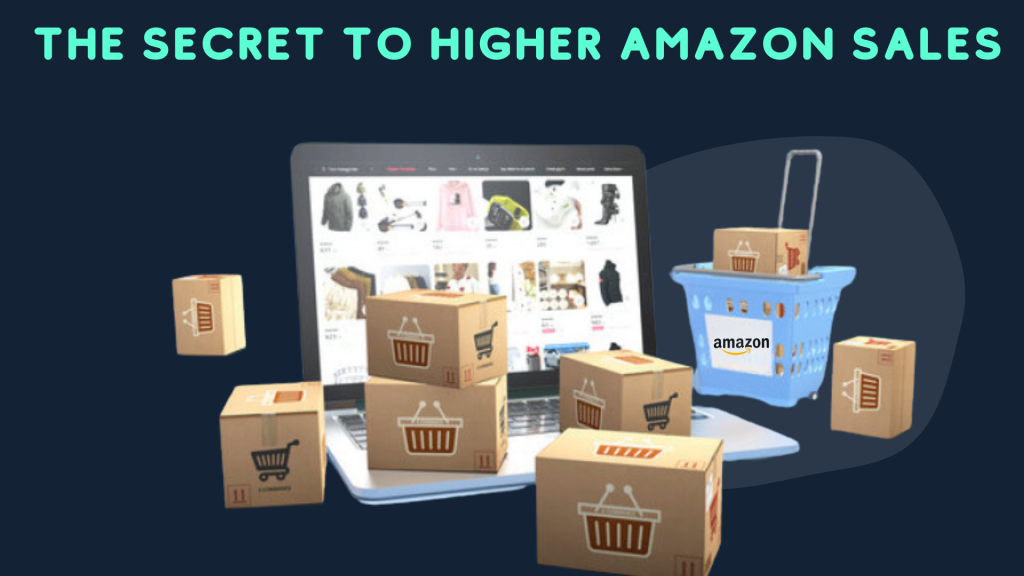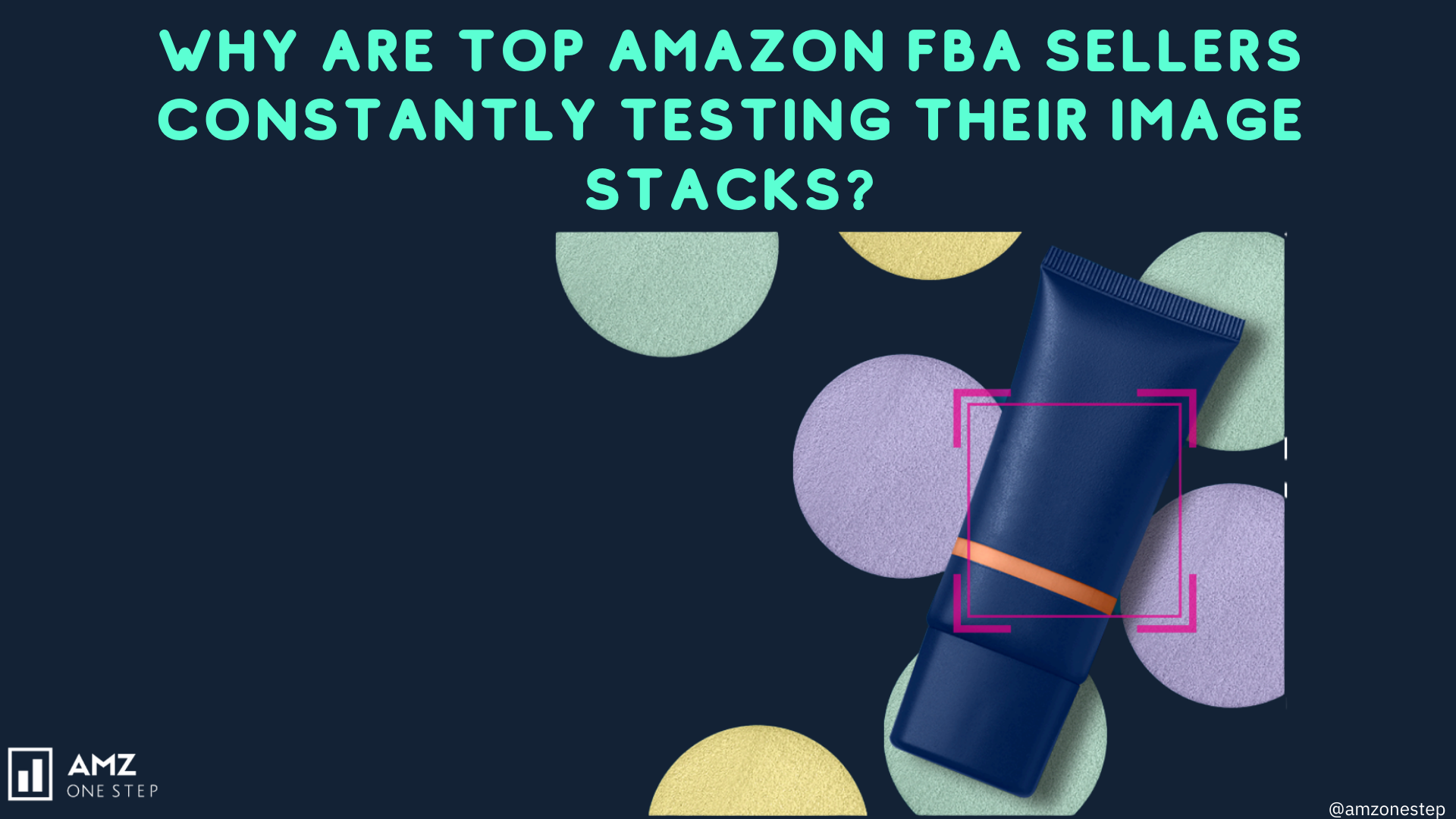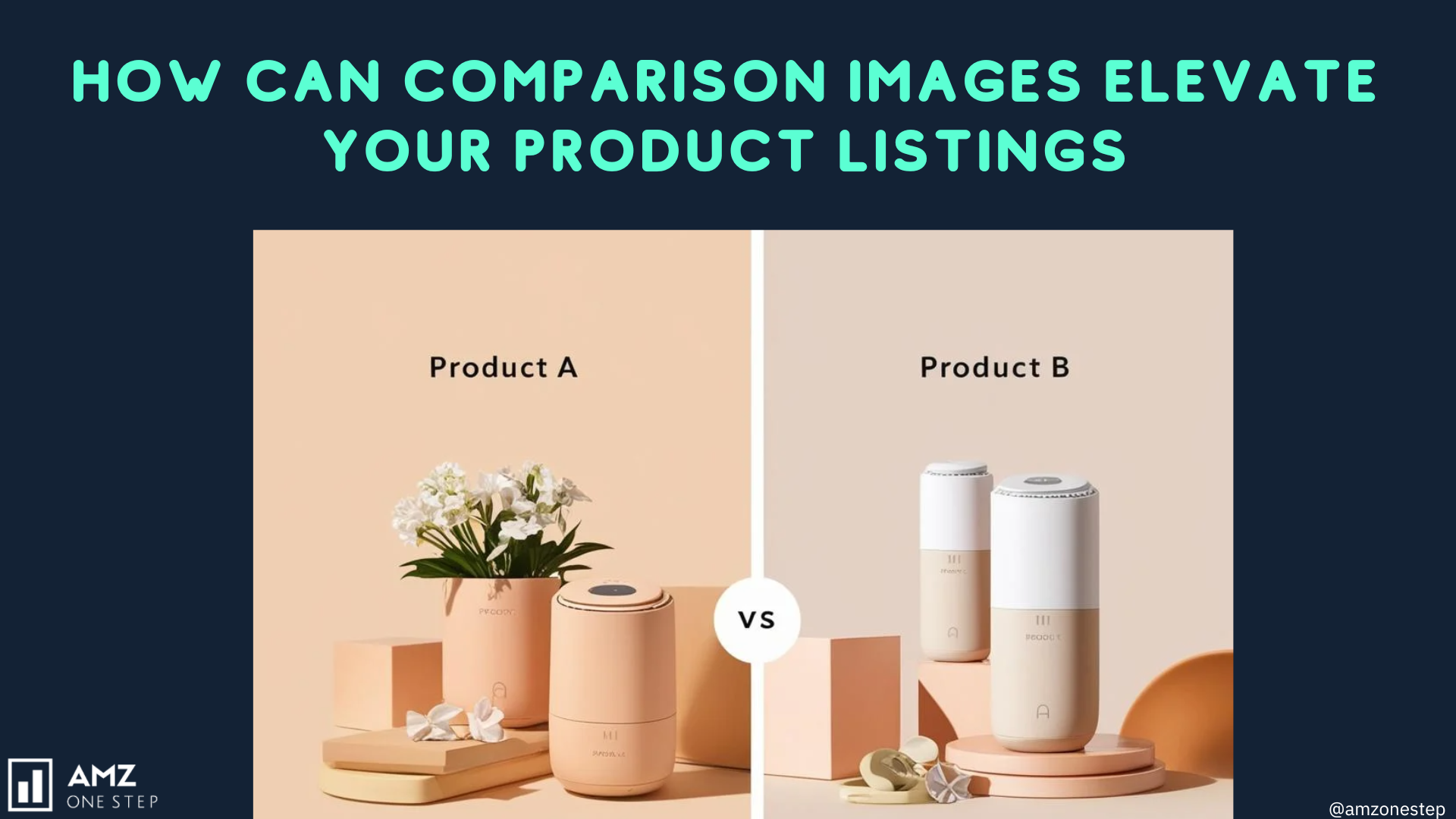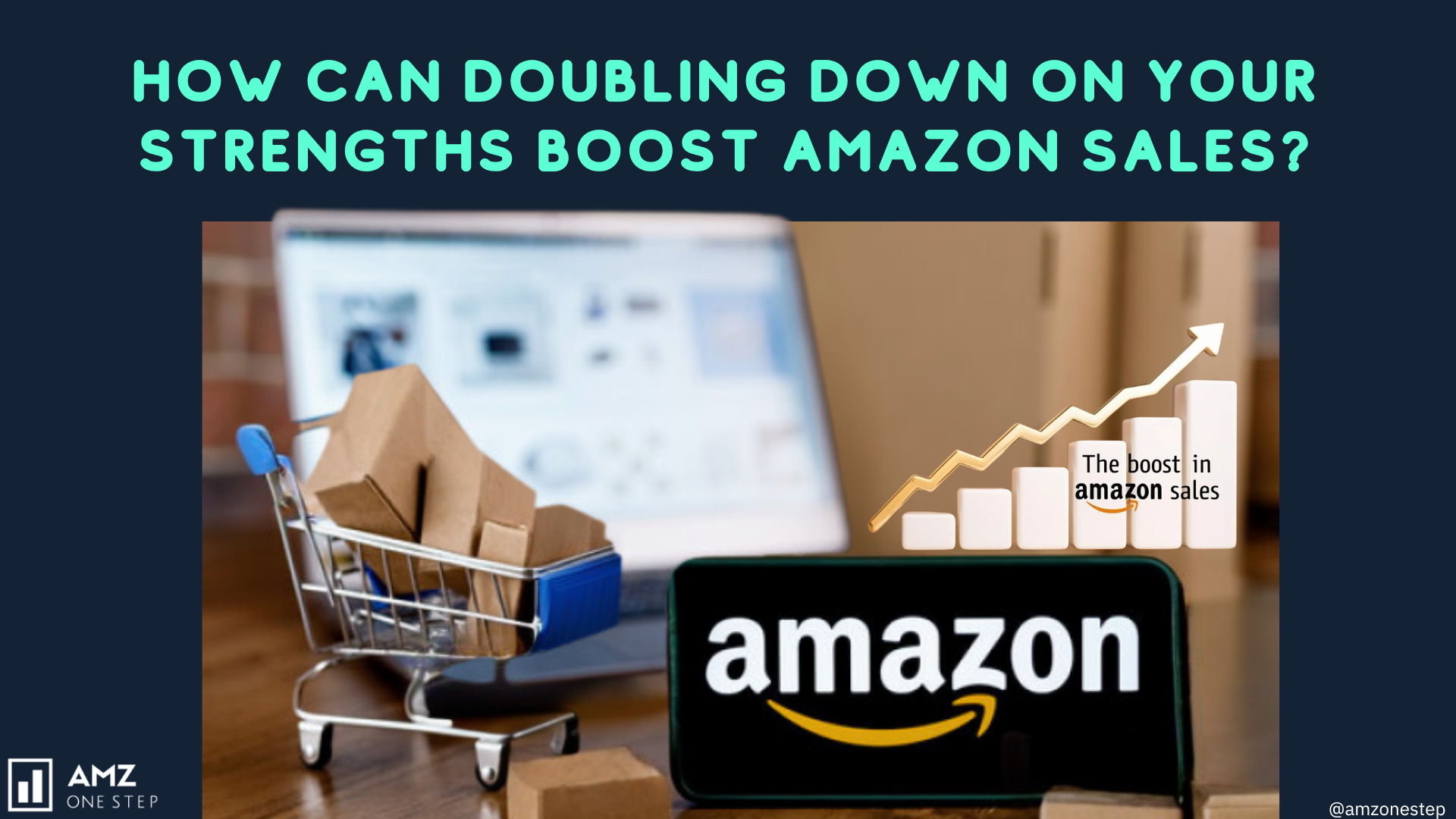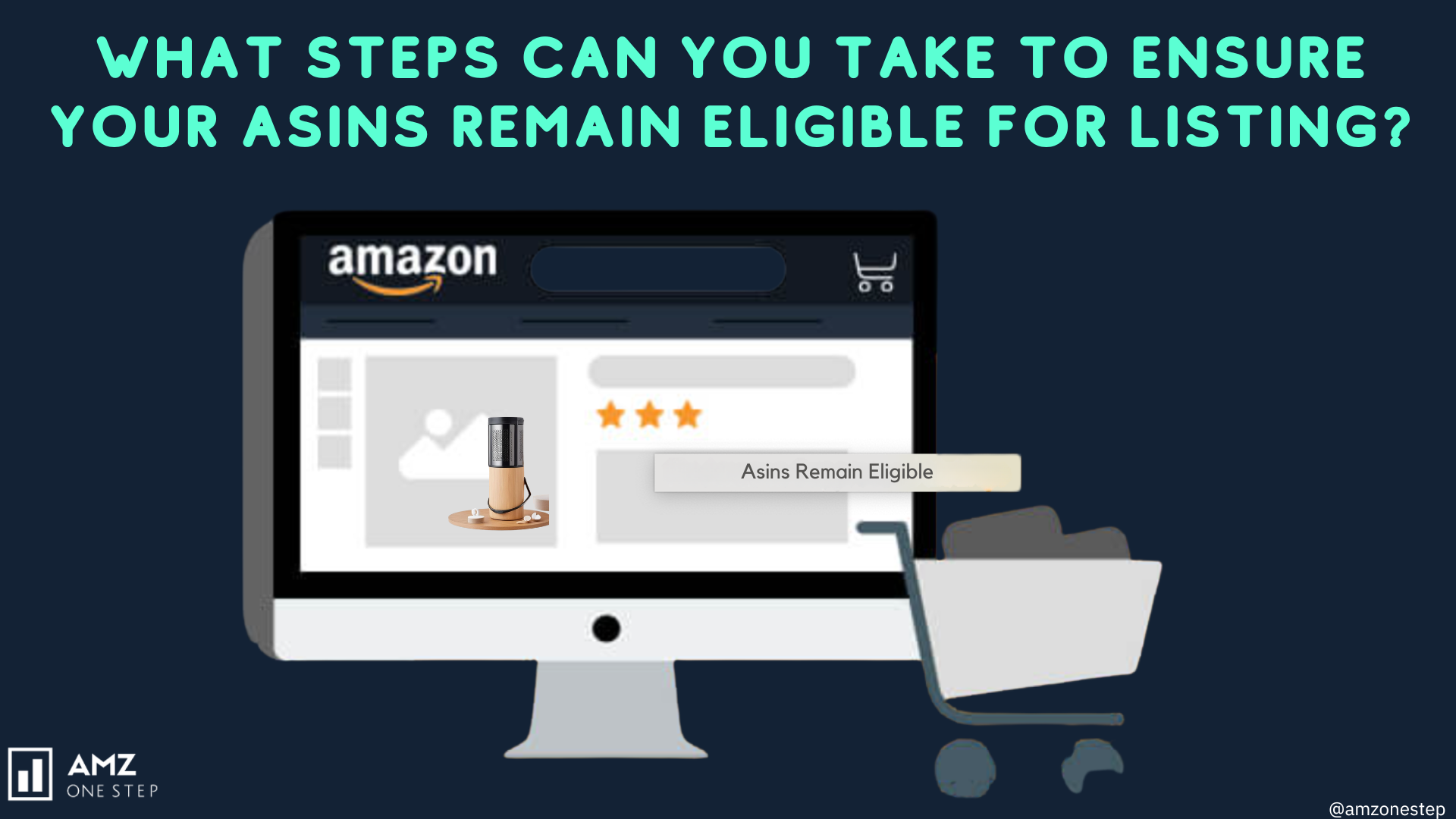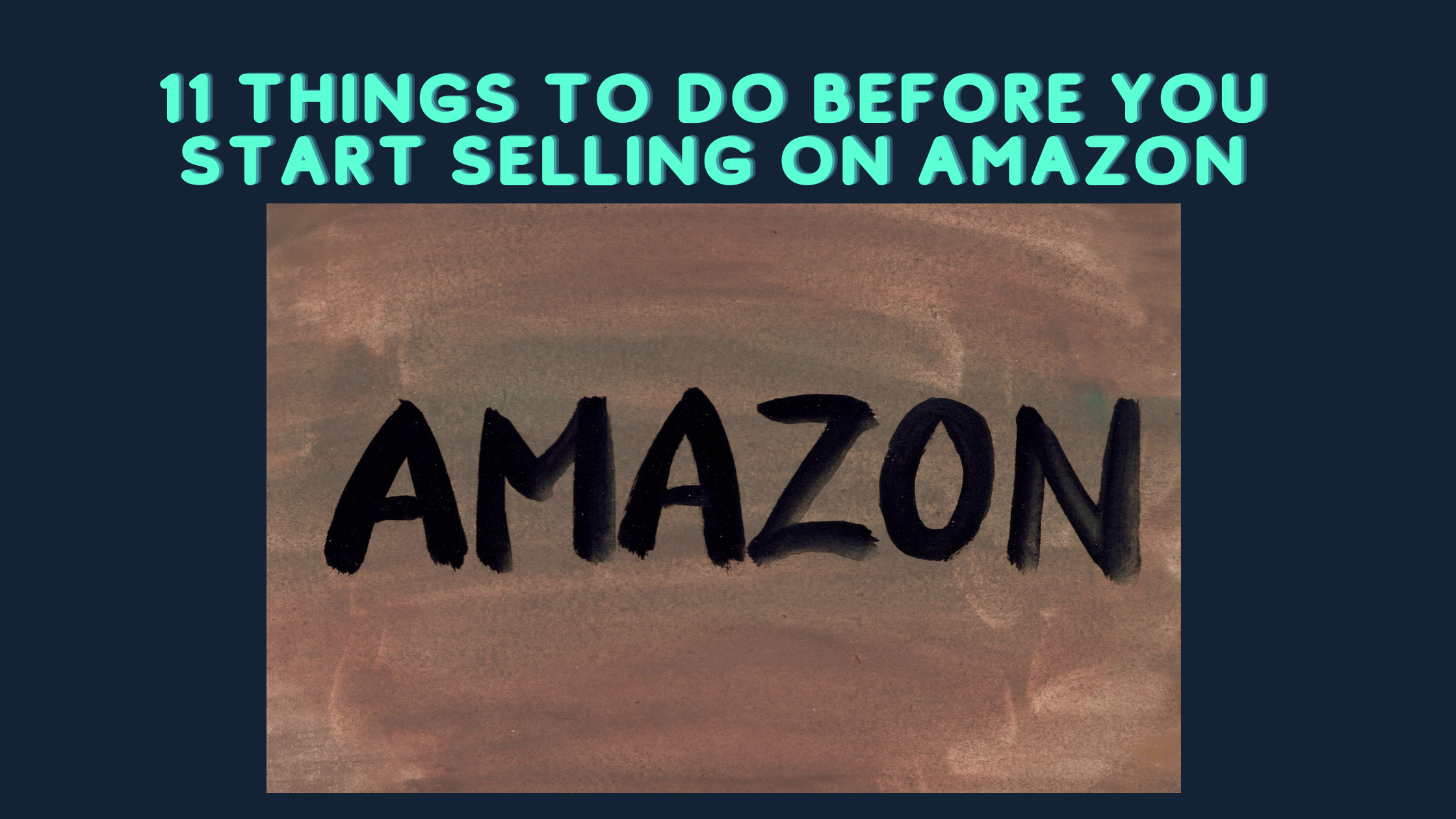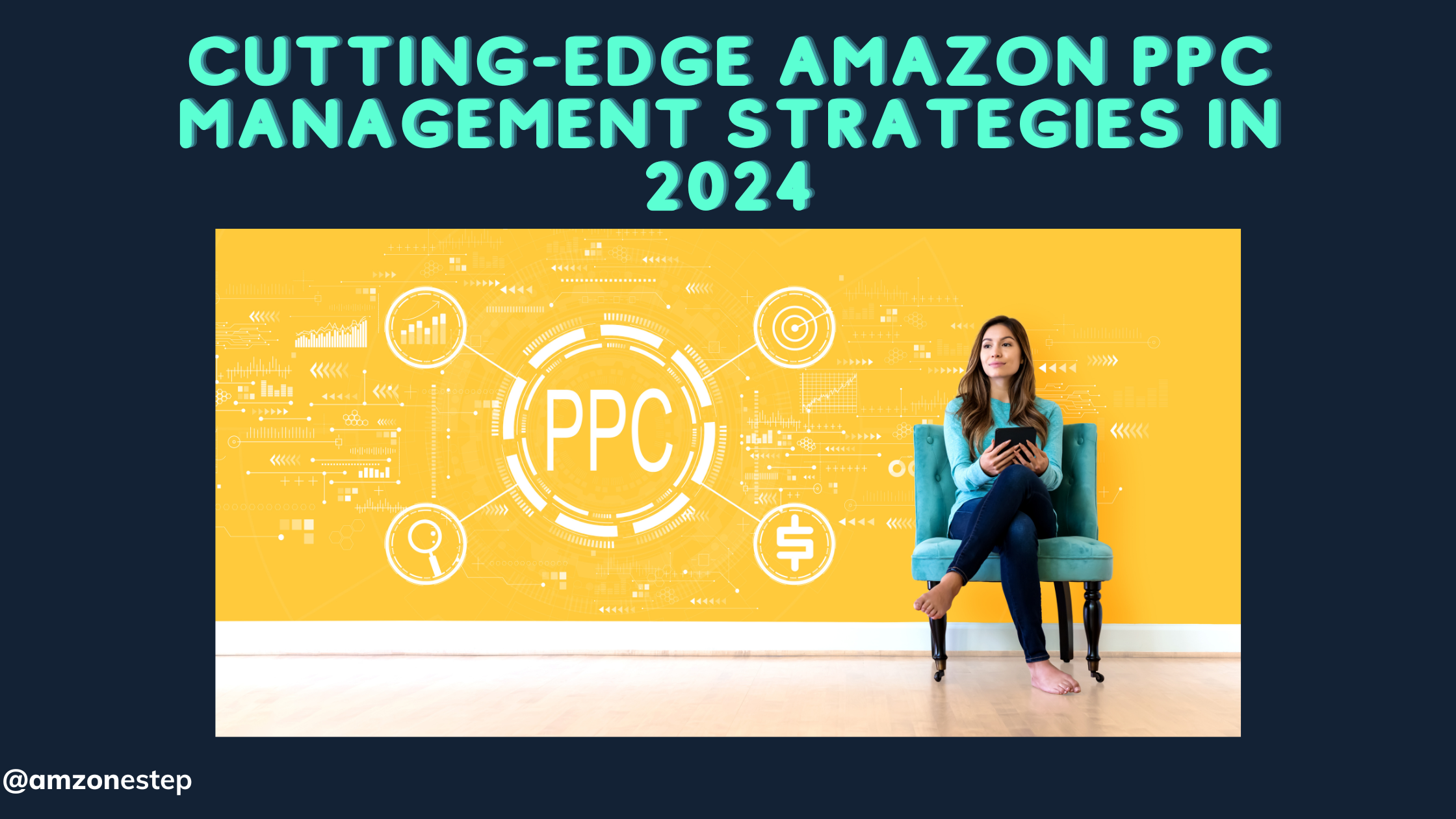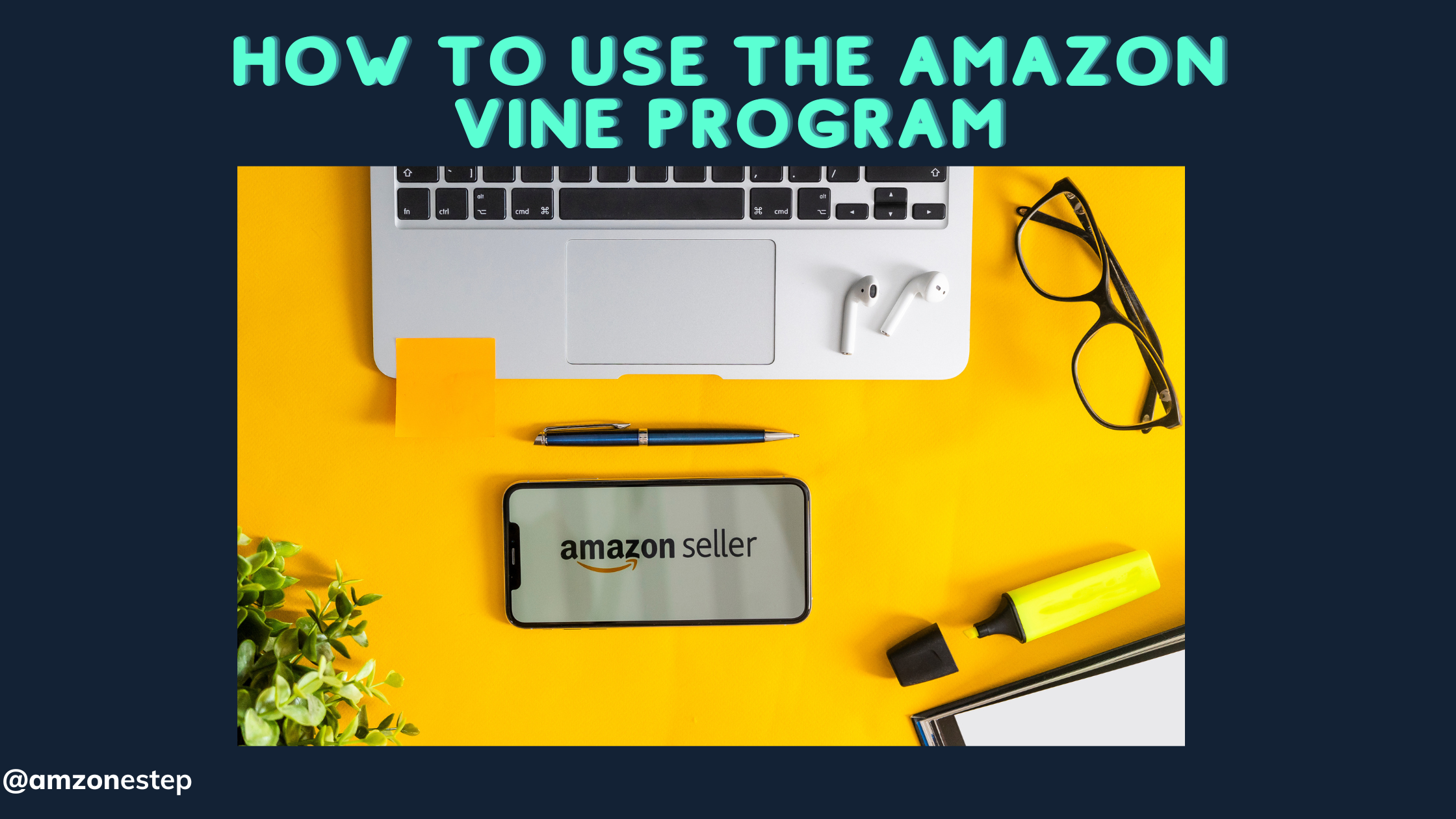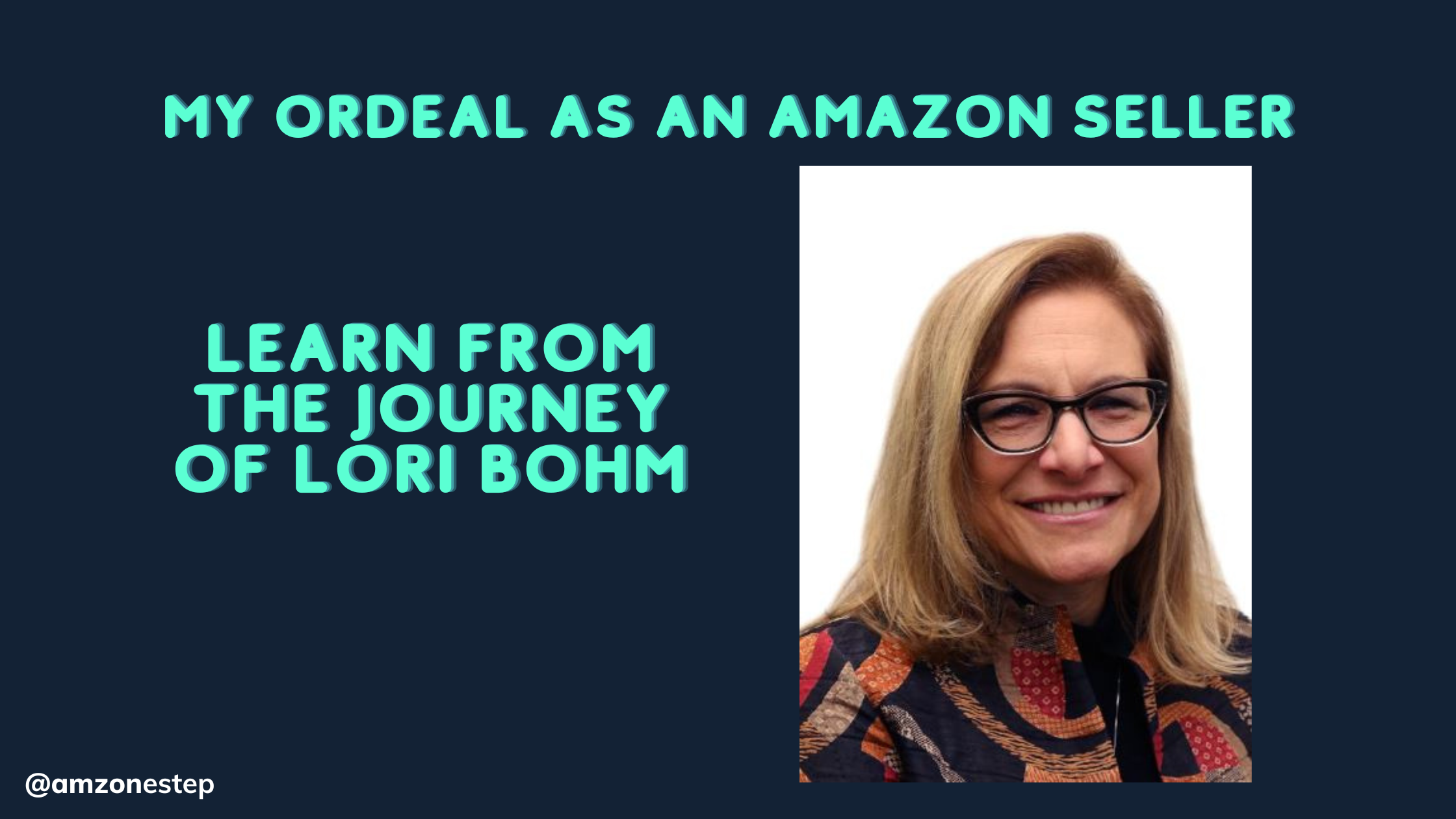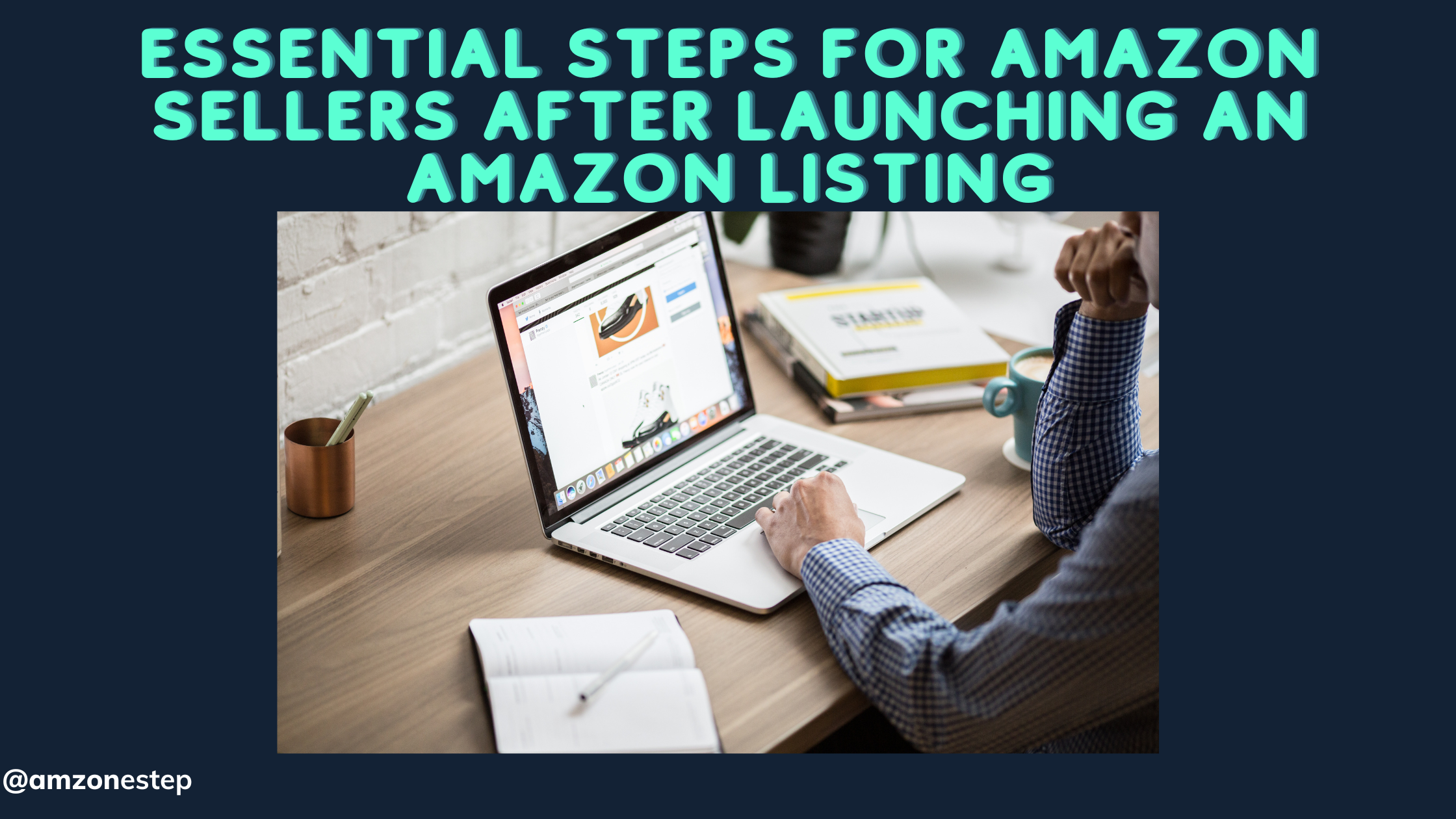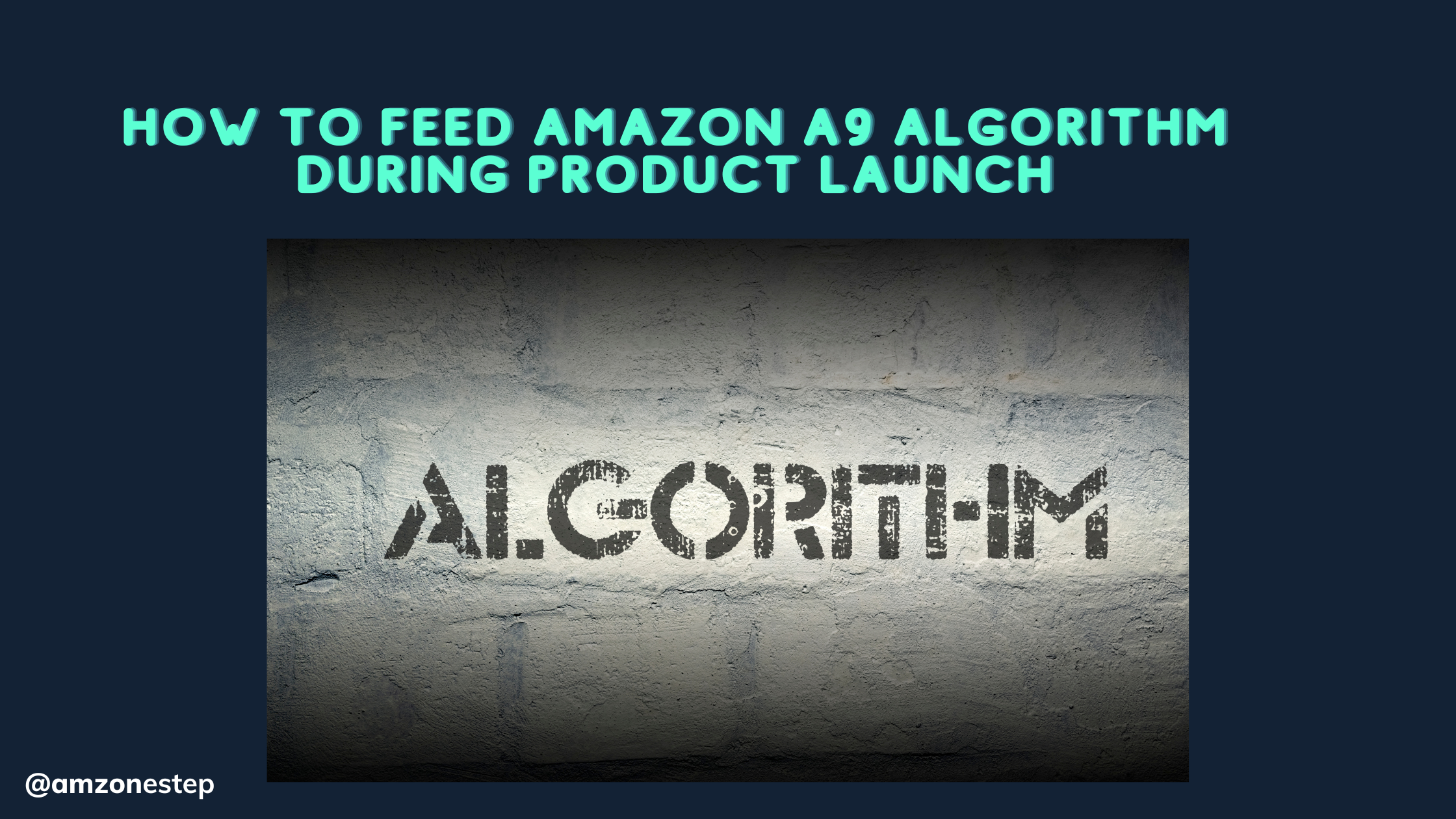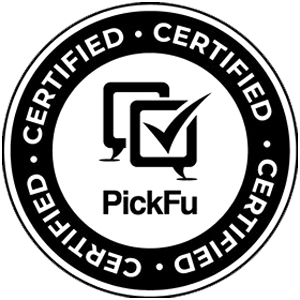Consider a customer exploring Amazon and being flooded with a huge number of choices. Their eyes suddenly fixate on your product. Why? It’s because your main picture doesn’t just fascinate them; it commands it.
Your main image is more than just a picture in today’s highly saturated market; it’s your silent salesperson. You can turn casual browsers into eager buyers by carefully adding labels to draw interest in special features.
Ready to discover how this simple yet powerful technique can transform your product listings and maximize your revenue? Let’s step right in!
Read More: How to increase Amazon CTR: Get more clicks on Amazon listings
Table of Contents
Why Your Amazon Main Image Could Be Losing Customers
When it comes to selling on Amazon, the rule is: that your product’s first impression is everything. Your main image isn’t just a photo among other photos; it’s a gateway to your product. In millions of competitors, for mere seconds, your main image stands between driving home the sale or sending away a potential buyer.
If your Amazon listing images don’t captivate and inform, you’re probably losing customers even before they click. Let’s talk about why your Amazon main image might be costing you sales and how to fix it.
The First Impression Problem
Your main image is the first thing customers see when scanning Amazon for possible purchases. It’s your opportunity to stand out in a crowd of similar products.
Professional photos of Amazon products are one of the few things that most sellers ignore. Grainy, poorly lit, or cluttered images scream unprofessionalism.
- For instance, if you’re searching for a stainless steel water bottle, one listing will show a clean, polished product on a bright white background, and another will have a blurry image with distracting shadows. Which one do you click? Exactly. A high-quality main image sets the tone for your entire listing, signaling trustworthiness and attention to detail.
Read More: Consumer Insights On Amazon: What Sellers Should Know About Amazon Customers?
Non-Compliant Images Can Hurt Your Visibility
Amazon has strict guidelines for listing images, especially main images. These rules exist to maintain a consistent shopping experience. Violating them—by including watermarks, text, or irrelevant objects—can lead to suppressed listings.
- For instance, if you’re an Amazon FBA seller offering organic skincare, your main image must display only the product against a white background. If your image includes props like flowers or additional items, Amazon may hide your listing, reducing your visibility and, ultimately, your sales. Following Amazon’s guidelines ensure your product gets the attention it deserves.
Your Main Image Lacks Emotional Appeal
While compliance is definitely needed, creativity is also necessary. Your main image must evoke an emotional response.
- For instance, imagine a child’s toy: the blank image of the toy probably will not arouse much interest; however, again, its colors, edges, and design may give out a feeling of fun and excitement.
In the Amazon product photography, it is all synthesized together. Professional photographers know how to convey the selling points of your product in accordance with Amazon’s requirements.
The Problem with Generic Product Angles
If your headline image does not show the functionality or special features of your product, a potential customer might scroll past it. For example, if you sell laptop stands and your headliner image shows just a flat, closed view, then it does not demonstrate angles that can be adjusted for any ergonomic benefit.
The creative use of Amazon product photography can be used to capture the best features of your product from angles that would encourage potential customers to know more.
Your Product Is Confusing And Vague
Your inconsistent branding will confuse your customers during the imagery that runs with your list. This is because if your main image does not match the rest of your visuals or brand story, it will raise a question of how genuine the product is.
- For instance, if your main image is crisp and professional, yet your extra list images are dimly lit or badly composed; buyers will not have confidence in your brand. As an Amazon FBA seller, continued effort in quality visuals will go towards a cohesive brand image, trust building, and ensuring conversions.
Read More: How Can Amazon Sellers Scale Photography and Videography for Thousands of Products?
Cluttered Backgrounds
Your product should be the center of interest but cluttered backgrounds can grab attention instead. Amazon requires that a pure white background be used for the main images. This isn’t a style regulation, but rather a rule so that buyers see only your product: no distractions in a clean background.
- For example, when selling a smartwatch, using a busy background, including props that are not relevant, might overshadow the product’s really cool design and functionality. Clean, professional Amazon product photography helps stand out in the crowd of products in your niche.
Your Image Doesn’t Emphasize the Key Selling Points
One of the biggest mistakes sellers make is failing to highlight what makes their product unique. If you’re selling an insulated travel mug, your main image should showcase its sleek design, spill-proof lid, or temperature-retention capabilities.
While additional images can provide more details, your main image should instantly convey the product’s value proposition. Using high-quality listing images that emphasize these key features can make your product more appealing and lead to higher click-through rates.
Seasonal or Trending Elements Are Ignored
Generally speaking, seasonal products or items tied to trends may have main images that need updates periodically. For example, for selling holiday-themed kitchenware, your main image is required to depict the festive season.
- A simple touch, such as emphasizing the product’s seasonal colors or packaging, can make it more attractive to buyers scouting holiday gifts. Being an Amazon FBA seller means keeping your images current in your listings to remain ahead of the game and appeal to the current preferences of the customers.
Read More: Is It Time to Up Your Amazon Main Image Strategy
Blurry Main Image
If a customer doesn’t understand your hero shot, they probably won’t click. Uncertainty about how your product looks, works, or fits in their lives tends to send them to the competitor’s site.
An example of a listing for wireless earbuds would demonstrate the earbuds clearly, and if it’s two pieces, present a side-by-side view of both the earbuds and the charging case.
Amazon product photography ensures that every detail is clear and understandable, bringing down hesitation, and thereby increasing conversions.
Your Competition Is Doing It Better
So, at the end of it all, if your competitors have better main images then you are at a disadvantage. Read through those similar products in your category and study their main images. Are they clearer, more appealing, or more professional than yours?
If so, it’s about time to invest in better Amazon product photography. With well-thought-out listing images that deliver quality, you can regain your competitive advantage over more customers.
Your main image is that of your silent salesperson on Amazon. Addressing these common problems and focusing on professional images transforms listings and could unlock that sales growth for which you’ve been working so hard. Do not let poor main images hold you back-invest in the quality your customers deserve.
How to Incorporate Labels Without Breaking Amazon’s Rules
Understanding Amazon’s Image Guidelines
Additionally, product images on Amazon are very specific. The primary image should be a plain, professional photo of the product against a pure white background, including no other text, logos, or any other graphic included on the primary image.
On the surface, these set rules can be quite constricting, but in actuality, they are what gives Amazon such a uniform, professional look and feel. Thus, secondary images represent a real golden opportunity to play creatively at labeling without breaching Amazon’s rules.
Why Secondary Image Labels Matter
Labels are not decoration, however; these are more strategic tools to communicate and influence the prospective buyer.
- These may highlight specific unique selling points about a product, such as being certified or with special deals; secondary images of reusable water bottles could say “BPA-Free,” “Eco-Friendly Material,” or “Lifetime Warranty.” All these labels give a person quick, digestible information that helps the customer make confident decisions about purchasing.
Selecting the Appropriate Information for Your Labels
Not everything should be on the label. Here’s the rule of thumb: remember what matters to your buyer. You sell a kitchen appliance, and potential buyers may want to know its capacity, energy efficiency, or accessories.
- For example, a secondary image for a blender may have a label with “1200-Watt Motor” or “Comes with Three BPA-Free Jars.” These will help differentiate your product from the competition without cluttering the view.
Designing Labels that Grab Attention
Design is a critical aspect of creating effective labels. Use bold, legible fonts that stand out without being overly flashy. Stick to brand colors to maintain consistency across your marketing efforts.
- For example, if your product is a set of wireless earbuds, a sleek label reading “40-Hour Battery Life” in a clean, modern font can make a big impact. Avoid cluttering the image; simplicity and clarity are the golden rules.
Main Image Flexibility, Yet Restrictions
Even if secondary images are more flexible, there are still restrictions. Amazon prohibits misleading or exaggerated claims. When you claim to have the “Best on the Market,” you are technically breaking the platform’s policies.
Instead, make only factual and verifiable claims, such as “More than 10,000 Positive Reviews” or “FDA-Approved Material.” Also, always cross-check Amazon’s policies so that your labels stay safe.
Read More: “Small Change, Big Impact: A 93% Sales Increase on Amazon
Utilizing Labels to Meet Customer Concerns
Every product category has common questions or objections that the customer might have. Thoughtfully crafted labels can alleviate these concerns upfront.
- For instance, a camping tent has a label that says “Waterproof up to 3,000mm” or “Sets Up in Under 5 Minutes.” These very details reassure buyers and reduce hesitation so that the conversions increase.
Real-Life Example: Labeling for a Smartphone Accessory
Consider a seller offering a phone case with advanced drop protection. The main image shows the product on a white background as per Amazon’s requirements.
The secondary images, however, feature impactful labels: “Military-Grade Drop Test Certified,” “Scratch-Resistant Coating,” and “Wireless Charging Compatible.” Each label directly answers a potential customer question while adhering to Amazon’s guidelines.
A/B Testing to Optimize Label Effectiveness
Not all subtitles affect the viewer’s brain in the same way. Utilizing A/B testing, sellers would be able to test different words, images, and positioning to discover what works. For example, one variant would read “Anti-Fog Technology,” and another would have “Durable Polycarbonate Frame.”
The outcome of such testing would then be taken into account when it comes to later labeling decisions in order to save time.
Balance Information and Aesthetics
The outcome is that too many labels can dilute the image and fuzz the minds of prospective buyers. Alternatively, one should balance key information conveyed without overwhelming the visual appeal of the image.
- For a fitness tracker, include maybe one or two labels that would say “24/7 Heart Rate Monitoring” and another that would be “7-Day Battery Life” but leave most of the rest uncluttered.
Use Professional Tools for the creation of Labeling
Creating good labels, therefore is creating professional tools and ensures perfection in every detail. The sellers can create their great labels by using designing software like Canva, Photoshop, or Figma.
- A seller who is offering luxury watches might use this software to print golden embossed labels that say “Swiss Movement” or “5-Year Warranty.” Quality investment in design will mean that your labels will enhance rather than detract from your product images.
Dos and Don’ts of Labeling Amazon Images
Before creating labels for your product images, familiarize yourself with Amazon’s image requirements. For main images, Amazon mandates a clean, white background with no text, logos, or additional graphics.
Secondary images offer more flexibility, allowing labels to highlight product features, usage, or certifications. Adhering to these rules ensures your listings remain compliant and avoid penalties.
Don’t Overload Your Images with Information
It’s tempting to stuff an image with as much information as possible. But that overwhelms the potential buyer. Labels should add power to the image, not mess it up.
In selling vacuum cleaners, use concise labels such as “HEPA Filter” or “1200W Suction Power.” Remember to keep focus on the unique selling points of your product.
Emphasize Unique Selling Points
Labels, in general, are a good way to highlight what makes your product different. If your product features something the others do not, let them speak for themselves.
- A good example is a yoga mat with “Non-Slip Surface” or “Eco-Friendly Material,” which should readily be in the fore and appeal to the specific needs of your customers as they browse through such a crowded marketplace.
Do Not Use Any Misleading or Unsubstantiated Claims
Amazon strictly prohibits misleading or unverifiable claims within product images. Avoid terms like “Best on Amazon” or “#1 Seller,” unless you can prove it with actual data.
Instead, rely on simple facts, such as “Over 5,000 5-Star Reviews” or “Tested for Durability.” Transparency builds trust with customers and avoids potential violations of the policy.
Do Use Professional Design Tools
A good label can add so much to your product, adding a nice touch of style. So start using professional design tools like Photoshop, Canva, or Illustrator to create clean and attractive labels.
- Take, for example, a skincare product. Such a stylish label saying “100% Organic Ingredients” in modern fonts gives it such a buy-worthy statement and aesthetic value.
Do Not Forget the Import of Testing Your Label Designs
Not every label will speak to the target market. Test out the A/B version of different label designs, phrases, and placements to learn what is better.
- For instance, test whether “BPA-Free” or “Safe for Kids” gets more engagement on a reusable water bottle. That is just one data-driven technique that can power up the effectiveness of your image significantly.
Do Make Sure to Consistency with Your Branding
Your text should support your overall brand look and feel. Keep color, font, and design scheme consistent with your packaging or logo. A sports earbud might use bold fonts with bright colors on the packaging for “Sweat-Proof Material” if the fitness brand has an energetic personality that it wishes to reinforce.
Don’t Forget Readability
For example, labels that are too small or cluttered, or using too complex a font, can make potential buyers impatient. Your labels have to be readable even on the smaller screens of mobile devices.
A simple label such as “2-Year Warranty” in a clean sans-serif font works better than a decorative script font that is hard to decipher.
Do Focus on Solving Customer Pain Points
Effective labels answer the questions and concerns that your customers have. If you sell a portable charger, having a label stating “Charges 3 Devices Simultaneously” goes directly to a common need of the buyer. Answering objections ahead of time can help nudge customers into making a purchasing decision.
Don’t Underestimate the Power of Good Images
Low-quality product photographs cannot be compensated by labels. Begin with images that are sharp and well-lit, thus presenting your product to its best advantage. You can then add labels to fine-tune the image.
For instance, a smartly photographed smartwatch with a label stating “24/7 Health Monitoring” speaks of professionalism and reliability.
Following these dos and don’ts will ensure that you are creating labels which aren’t only in line with Amazon’s policies but actually help to drive higher engagement, build customer trust, and ultimately increase sales. Good labeling is a mighty tool if leveraged appropriately—make it work for you!
Read More: How To Maximize Your Amazon Product Video on Amazon FBA?
How to Handle Competitor Copycats with Strong Labeling
Recognizing the Challenge of Copycats on Amazon
The Amazon marketplace is massive and has its pros and cons. While it gives an incredible reach, it exposes sellers to the risk of competitor copycats. These competitors may copy their product listings, pricing, and branding in order to steal your sales.
However, to defeat that risk, sellers must develop a distinct identity for their products and one of the most effective ways to do that is through strong, compliant image labeling.
Why strong labels can deter copycats
Labels can be used to indicate characteristics, advantages and what you have that makes your product unique and superior. A labeled picture of a product gives you an immediate perception of quality and authority and usually deters copycats, who generally are not known to pay much attention to details.
- For example, if you are selling a high-end coffee grinder, a label on “Stainless Steel Blades” or “5-Year Warranty” tells the customers and the competition that your product is good.
Building Brand Authority through Professional Labeling
A professional label is an identity of your brand and gives a serious impression. Using branded fonts, colors, and logos consistently within Amazon’s guidelines for secondary images allows you to build recognition that will be difficult for the competitor to match.
- A skincare brand could create an auxiliary image with a label that reads “Recommended by Dermatologist” with beautiful typography. So subtle yet potent branding creates a unique edge over regular knock-offs.
Highlighting Unique Features through Labels
The packaging of your product cannot be easily mimicked, but unique features and certifications can be harder to fake.
- Labels will draw attention to these areas. For instance, if your fitness tracker syncs easily with a proprietary app, then “Seamless App Sync” is the kind of distinction that will draw attention to your product. Likewise, secondary image certifications such as “FDA-Approved” or “ISO Certified” will make your product seem more credible and unique.
Engagement with Customer Reviews and Awards
Social proofing is another potential weak point by which they go wrong. A beautiful label saying “10,000+ 5-Star Reviews” or “Awarded Best in Category 2023” adds more trustworthiness and authenticity to your product.
The same does not apply to the copy’s product as there is no such recognition. In an attempt to sell more products, this approach also retards imitation since it amplifies accomplishments that a counterfeit cannot boast of.
Targeting Pain Points with the Label
Competitor handling can also be done through direct targeting of customer pain points, which generic products cannot solve.
- For instance, if your ergonomic office chair solves a customer problem based on back aches, a label saying “Certified Lumbar Support” indicates that your product targets a definite audience need. Copycats would fail because they based their claims on broad and non-specific commands. From this point of view, niche benefits make it hard for your product to replicate effectively.
Dynamic Label Updates to Keep Pace with Competitor Dynamics
Competitors never stop moving so should your main image strategy. Update product labels once in a while for listings that stay dynamically updated and ahead of the curve.
The assumption is that your insulated water bottle now keeps drinks hot for 24 hours, then updates the label to “Keeps Drinks Hot for 24 Hours”. Proactivity means that your product will always stay ahead.
Do Not Overclaim. Remain Compliant
Although strong labeling is an effective deterrent to counterfeiters, it is also important not to push too far beyond Amazon’s policies and not make exaggerated claims.
False labeling can result in the suspension of your account and harm your reputation. Rely on verifiable facts and even certifications. Thus, instead of expressions such as “Best Organic Material,” use “Certified Organic Cotton.”
Establish Trust Through Transparency
The best defense against wannabe copycats is trust. Honest and transparent labels above all resonate with the customers and reinforce loyalty.
- For instance, if a food product boasts its “No Artificial Preservatives” or “Sustainably Sourced Ingredients,” its quality commitment really cannot be easily copied by a would-be imitator.
Using Visual Appeal to Outshine Competitors
Copycats often can’t and won’t compete visually with how great your product images are. Spend money on good product photography and combine those images with beautiful, thoughtfully designed labels.
A premium smartphone accessory might feature a small label in a clean product image that reads “Compatible with All Major Brands.” This brings in feelings of trust and security that ignore copycat brands.
Taking Your Brand Further Than Labels
As powerful labeling is an important tool, it works best when it is part of a broader strategy. Combine impactful labels with excellent customer service, good marketing, and continuous innovation to create a brand that stands for quality. Even the most persistent copycats would struggle to get there once your brand stands for quality.
Read More: How to Hire the Best Amazon Product Photographer
Main Image Labels for Cross-Selling and Upselling
Leveraging Labels to Boost Cross-Selling Opportunities
Cross-selling those additional complementary things to the customer. Good image labeling can make this task smooth. While labels can be created to suggest related items, buyers can become interested in your catalog.
A high-quality DSLR camera, for example, sold with an additional image and a label like “Pair with Our Pro Lens Kit”, creates a suggestion you’d want to entice them to buy. These visual cues inform and pique curiosity about other products.
Why Image Labels are the Game-Changer for Upselling
Upselling focuses on encouraging customers to choose higher-value or upgraded options, and image labels are an effective way to highlight premium features or versions of your product. Imagine selling a smartwatch with multiple variants.
A label on a secondary image could say, “Upgrade to Pro for GPS & Advanced Fitness Tracking.” This direct, visually appealing approach ensures customers are aware of their options and the benefits of spending more.
Strategically Placing Labels for Maximum Impact
Placement matters when using labels for cross-selling and upselling. Labels should be prominent but not overwhelming, guiding the customer’s eye naturally.
- For example, if you’re cross-selling a kitchen blender, a label like “Compatible with Our 12-Piece Accessory Set” could be placed near the product’s base in the image. This subtle positioning ensures the label is noticed without detracting from the primary product.
Highlighting Add-On Features to Be Cross-Sold
Highlighting how products are used together is one of the most impactful means of promoting cross-selling. For example, while selling a gaming console, an add-on image can carry a label such as “Upgrade Your Game Experience with Our Wireless Headset.” These suggestions create a story for the client’s purchase, and the extra purchases make complete sense to them.
Cross-Selling through Premium Feature Labeling as a Means of Upselling
If the product being sold is a premium or an upgraded version of the same, it should be most prominently labeled on what makes it different.
- For instance, if selling a vacuum cleaner, a better model would likely have the label that says “Max Suction Power: 2500PA” or “Self-Cleaning Technology.” This informs the consumer why the better product has to be priced higher so that it can be more frequently upsold.
Product Bundling through Visible Labels
Bundles are a fantastic strategy when you have a cross-selling or upselling need; labels can work well in the promotion.
- For example, if you sell skincare products, a label on your face cream may say, ” Bundle with Our Toner & Serum for 25% Off.” That promotes the view of the customer that you’re giving him a better deal, so he should “buy” the bundle.
Sale Enforcement through Limited-Time Offers
To further maximize cross-selling and upselling, add a sense of urgency to your labels. Such a label as “Save 20% When You Add Our Matching Charger” creates a time-sensitive incentive for your customers.
Such tactics push impulse purchases, enabling you to push more of the products while offering added value to the buyers.
Cross-selling Seasonal Products through Labels
Another great cross-selling opportunity with labels is seasonal promotions. If you sell patio furniture outdoors, a label on a patio set might read, “Pair with Our Waterproof Covers for Winter Protection.” By pointing the consumer to complementary relevant products offered in a specific season, you could make additional sales.
Cross-Selling Through Premium Packaging Labels
Premium packaging gives consumers perceived value. If you promote a gift-ready version of your product, having an indicator such as “Exclusive Gift Edition Available” tips some consumers over to the more expensive version. Using a bottle of wine as a holiday product packaged in premium style prompts shoppers to buy this special gift for someone else.
Track How Well Labeling Programs Are Working
To measure how well cross-selling and upselling are done through image labels, track the averages of order value as well as the click-through rates on your product variation. Once you get a catchy lead from a label that may suggest an upgrade or a complimentary item, you can refine and expand this strategy.
- For instance, you might compare whether “Exclusive Add-Ons Available” performs better than a feature-based label that describes all the details.
Read More: Decoding 101+ Highly Converting Engaging Amazon EBCS
Highlighting Sustainability Through Strategic Labeling
Using Labels to Showcase Eco-Friendly Materials
This is the most direct method through labels: use it when you’re selling reusable grocery bags, for example.
On a second image, your label could read “Made from 100% Recycled Plastic Bottles.” It turns one’s attention to the environmental benefits of the product and appeals to the consumer who is on the lookout for ways to literally reduce their carbon footprint.
Credentials That Build Credibility
External third-party certifications are also a good way to prove that a product is sustainable. Most known and widely accepted third-party labels such as “FSC Certified” on wood products, “USDA Organic” on food items, and “Energy Star Rated” for appliances.
- For instance, an FSC-certified sustainable Bamboo cutting board will give proof of their sustainable origin.
Increase Reusability And Durability
.Two other significant sustainability features consumers appreciate: durability and reusability. A stainless steel water bottle might boast a label that reads, “Designed to Replace 1,000 Single-Use Bottles,” emphasizing the long-term positive effect on the environment.
Labels like this are very effective in positioning your product as a responsible choice while nudging consumers to choose alternatives that are not disposable.
Label Carbon Neutral Manufacturing
It can be a wonderful feature to mention when the product comes out of a carbon-neutral facility. A back image may be one of such labels that says “Carbon-Neutral Production Process” or “Offset 100% of Carbon Emissions.”
Such a message not only attracts ecologically conscious customers but also differentiates your product in competitive categories.
Sustainability-Focused Packaging Labels
Packaging Sustainability is one of the latest requirements of many customers. If your product comes with biodegradable or compostable packaging, attach a sticker to it, like “Eco-Friendly Packaging: 100% Compostable.”
In this way, a brand that uses plant-based packaging for skin products can claim this difference as a unique selling point and can position the product with ecologically conscious values.
Informative Labeling, Promoting Recycling
Label products that contain recyclable materials with information on how to dispose of them correctly. For example, an electronic device label might read, “Recycle Me Responsibly: E-Waste Collection Supported.”
Combining a QR code on the label can also send interested buyers to recycling programs or disposal information; hence, sustainability is actionable and convenient.
Taking Advantage of Seasonal Sustainability Campaigns
Seasonal campaigns may emphasize sustainability. For instance, a holiday gift set might carry a wrapper that says, “Give the Gift of Green: Eco-Friendly Products for the Planet.”
This links the notion of sustainability with seasonal buying behavior, appealing to environmentally conscious consumers during peak shopping seasons.
Social Responsibility Promotion
In addition to the environment, sustainability also speaks to society. If your product is made under fair trade or other community initiatives, attach a label like “Handmade by Fair Trade Artisans” or “1% of Proceeds Donated to Environmental Causes.”
Such messages bring a very ethical feel to your product, making it appealing to customers who genuinely care about giving back.
Greenwashing in Labeling
While labels are wonderful, they must be honest and verifiable. Any exaggeration regarding the green content or too vague will be branded as an accusation of greenwashing impression that results in lost trust and credibility.
Instead of a vague “Environmentally Friendly,” use precise and verifiable terms like “Reduces Plastic Waste by 90%.” Transparency is the way to gain and maintain consumer trust.
Telling Your Sustainability Story
Labels are only the beginning of your sustainability story. Educate the customer to want to find out more by sending them to a website page or a product insert to tell them about your sustainable practices.
- An example could be a shirt saying, “Made with Organic Cotton – See Our Sustainability Story”. This compels the client to engage more intimately with your brand and builds a more secure connection.
Read More: Amazon Competitor Analysis: How to Stay Ahead of the Curve
The Role of AI in Designing Better Image Labels
Artificial intelligence transforms business operations in image labeling. This becomes smarter, faster, and more impactful. This will involve providing better designs, making labels more relevant, and enabling sellers to write effective product images that resonate with customers.
Businesses can create labels that look professional yet optimize for other performance criteria on Amazon by using AI tools.
Label Personalization with Targeted Audiences
AI is very good at interpreting customer data, and tracking trends and trends of a particular type of jargon. Sellers can thus craft labels that resonate with the intended market.
In this case, for instance, a tool using AI might determine that customers who care about the environment like terms like “Sustainable” or “Plastic-Free.”
The seller can use this insight to make labels that reflect that; for example, “Eco-Friendly Packaging,” thus achieving higher engagements and conversions.
Streamlining the Design Process
Designing attractive and compliant labels without time may be cumbersome, but AI technology on platforms like Canva, Figma, and Adobe Firefly can reduce such efforts. AI can indicate layouts, choose optimal fonts, and ensure color combination for flawless appearance.
- For instance, a label with the phrase “BPA-Free” automatically adjusts its text so that it remains visible despite different sizes of an image, giving one that professional look without needing any design capabilities.
Optimizing Layout and Size
It can also mimic what the customers see on their various devices and screens related to product images. With the behavior of the users analyzed, AI can propose the best position for the size of labels so that they are highly visible.
- For instance, an AI might recommend that on mobile, there should be the “30-Day Money Back Guarantee” label at the bottom right. It should not cover any critical product features but be observable on the screen.
Enhancing Conformity with Guidelines of Platforms
Staying on the right side of the platform guidelines will help avoid fees, and AI can assist sellers in staying within those boundaries. Take Amazon’s image requirements, for example. This is how AI can flag potential issues with labels, such as too much text or improper placement.
- For example, AI might send a seller notice that a “best value” label on the main image constitutes a policy violation so they can correct it before publishing.
Multilingual Labeling Improvement
The use of AI in creating labels helps sellers target various global markets. AI translation tools like DeepL or Google Translate facilitate the creation of multilingual labels. AI can ensure that translations are, therefore, both accurate and culturally appropriate.
- For example, a product label reading “Durable and Reliable” can be translated to Spanish or Mandarin while keeping the original impact, making it easier to reach diverse audiences.
A/B Testing and Performance Analysis
AI is very helpful in testing and fine-tuning labels. Google Optimize or Amazon’s internal A/B testing systems allow sellers to test varying label designs and establish which one performs better.
- For example, an AI tool would ascertain whether the term “Ships in 24 Hours” gives better performance than “Fast Shipping Guaranteed.” Over time, the analysis driven by AI fine-tunes the labeling strategy and shows a high rise in conversions.
Creating Dynamic Labels Based on Real-Time Trends
AI will be able to detect real-time trends and change labels appropriately. For example, if there is a holiday season, AI could suggest adding the tag “Perfect Gift Idea” since sales usually skyrocket during that season.
Similarly, if the demand increases for sustainable products, AI will suggest bringing more features like “100% Biodegradable” or “Carbon Neutral Production” through labels.
Using AI for Label Refinement
AI photo editing tools enhance Amazon image quality generally and add to the labels. For example, tools such as Adobe Photoshop’s AI feature can improve the image’s clarity, adjust light levels, and even enhance the background.
In combination with labeling, these adjustments make the product image more attractive and informative.
Anticipating Label Effect Using Machine Learning
Machine learning algorithms analyze historical data to predict the impact of specific labels. For example, AI might identify that products with labels emphasizing “Free Shipping” tend to outperform those without.
This predictive capability helps sellers prioritize high-impact labels and allocate resources effectively, improving their overall marketing strategy.
Streamlining Workflow with AI Integration
AI functions directly with other e-commerce services to make the workflow very efficient and smooth. For example, AI-based marketplaces can automatically fill the entire image labeling from producing different design options to publishing listings.
This efficiency allows sellers to concentrate on other aspects of their business while still publishing high-quality, competitively-lowered images of products.
Read More: How AI Can Help You Sell on Amazon
Why Eye-Catching Labels Win the Buy Box
Communicating Value Quickly and Effectively
The Buy Box algorithm prefers listings that meet customer needs and produce regular sales. Catchy labels help by pointing out the exact reasons a customer should choose your product. The label “Assembled in the USA” or “Organic Certified,” for instance, immediately assures the customer of value.
These are short, attention-grabbing messages that come at the perfect time to lower decision fatigue and enhance the chance that buyers will select your product and complete the purchase.
Label to Drive Faster Conversion
Amazon will reward listings that convert faster. Labels, such as “Next-Day Delivery” or “Limited Stock Available,” trigger the consumer to make a purchase because time is short.
A fast conversion rate, through which one gains sales, sends an indication that your product has efficiently met the customer’s demand. It makes winning the Buy Box easier for Amazon.
Lessening Consumer Risk
Labels also address some typical buyer concerns, such as return policies or guarantees. A label like “30-Day Money-Back Guarantee” provides assurance, reducing hesitation and increasing the confidence of the buyer.
This decrease in uncertainty leads to more completed purchases, which subsequently contribute to the metrics Amazon uses for granting the Buy Box.
Increasing Customer Satisfaction with Educative Labels
Any label that clearly defines what a buyer can expect helps set the right expectations. For example, a label on a case of phones that just says “Fits All Major Phone Models” means that a customer exactly knows whether the product will meet their demands.
This kind of clearness reduces negative reviews and returns are both very crucial for the purpose of maintaining a strong Buy Box presence.
Alignment with Amazon’s Buy Box Criteria
Amazon’s Buy Box algorithm takes into account several factors, including price, fulfillment, and customer satisfaction. Nice labels indirectly feed these criteria by bringing more sales, converting better, and generating fewer issues like returns and negative feedback.
Thus, optimized listings using smart labels enhance your overall ranking position in the Amazon competitive environment.
Combining Attractive Image Labels Generates Buy Box Success
Winning the Amazon Buy Box is a function of small details. Vibrant, colorful labels catch people’s eyes, but they also engender trust, convey value, and encourage quick decisions.
Adding smart, attention-getting labels to your product images will improve performance metrics for your listing and help you maintain or gain ground in the Buy BBoxkey step toward dominating the marketplace.
Using Labels to Address Customer Pain Points
Probably the most common pain point that shoppers face when trying to use a product is the complexity it presents in doing so-whether it’s assembling a new appliance or putting together furniture. Customers demand products that are easy to use.
Easy, simple labeling like “Easy Setup in 5 Minutes” or “Tools Not Required” can instantly communicate that your product is easy to use. This simple promise eliminates a purchase barrier and builds confidence by relieving anxiety about the time and labor involved in using the product.
Quality and Durability Concerns
Consumers are likely to be concerned with the quality and longevity of the products they buy. Labels can easily eliminate some of these types of fears.
- For example, in the case of a mattress, a “Guaranteed 10-Year Durability” or “Premium Memory Foam” label addresses the same concerns as quality, ensuring customers that they have just spent their hard-earned cash on a long-lasting product. In the same way, a “Lifetime Warranty” label immediately eliminates fears of a faulty product, a pain point for many buyers’ minds.
Price is one of the main factors that may create a change in a customer’s mind. A label such as “Save 20% Today” or “Free Shipping on Orders Over $50” solves the most common pain point associated with high costs.
Consumers will be more likely to complete the transaction when they feel they obtained a good deal, and these labels push the customer into buying and create a sense of value.
- For products that offer long-term savings, such as eco-friendly options, labels like “Reduces Energy Bills by 30%” can appeal to the minds of frugal shoppers, too.
Relating to Space and Storage Problems
Many customers dread buying particular items due to fears about storing or lack of space. A label claiming, “Compact Design” or “Folds for Easy Storage” meets that issue at once.
If you market portable air, a label that proclaims “Space-Saving Design” immediately alleviates the fear that consumers will have to give up some living space to be cool. Such labels let customers envision how the product will fit into their lives.
Relieving Safety Concerns
Safety is a prime concern when the products are designed to be around children or pets or in hazardous locations. There’s nothing like highlighting, on the label, features like “Childproof” or “Non-Toxic” to further reassure the customers.
- For a kitchen appliance, a label that says “Overhat Protection” certainly reduces safety concerns, and therefore, security while buying is given to the customer. You demonstrate an understanding of the needs of buyers by directly confronting concerns.
Communicating Fast and Reliable Delivery
Among the most common pain points that online shoppers are facing delays and long waiting time. Such a label as “Ships Today” or “2-Day Delivery” solves the problem of not wanting to wait so long with reliability for the customer.
This label provides instant assurance: the product will be there soon, especially when time is considered. Further, labeling as “Free Returns” can also help reduce risk aversion to failure in delivery or product dissatisfaction itself.
Building Trust through Clarity
Many customers do not want hidden fees or misleading claims of products. Well-defined labels that clearly state what the product contains or provides are able to avoid this problem.
A label stating something like “Includes Free Accessories” or “No Hidden Fees” emphasizes clarity in the buying process and allows customers to have confidence in what they pay for.
If your product has a very clear return policy, labeling it with “Free Returns” or “30-Day Satisfaction Guarantee” helps build trust and ensure even the hesitant buyer will be okay.
Explain How the Product Solves a Problem
Labels can be used to refer directly to the particular need the product addresses. For example, if you’re selling a portable charger, a label like “Never Run Out of Battery Again” directly speaks to some need that a customer has-to know that the product is reliable and convenient when they need it on the go.
These kinds of problem-solving labels will immediately convey value so that customers can easily see how the product will make their lives easier and more efficient.
Addressing Health and Wellness Concerns
Health-conscious consumers care about what ingredients or materials go into the products they buy. Labels that indicate health-related benefits or certifications, such as “100% Organic” or “Gluten-Free,” speak directly to these concerns.
- Example: The vitamins bottle is labeled as “Non-GMO.” This bottle targets clean, natural supplement consumers who are naturally health aware and concerned about genetically modified organisms. By front-end addressing health pain points, you tap into a growing market of health-aware customers.
Simplifying Decision Fatigue through Simple Labels
Customers often suffer from decision fatigue if a company offers too many choices. Simplify those choices or provide the benefits of a product with a pithy label.
In the case where a store sells several varieties of cleaning products, the label “Best for Pet Owners” will nudge customers toward the product that best fits their particular needs. A “Best Seller” label will help those looking for popular or best-selling items.
Labels on Amazon Ad Campaigns
Amazon ad campaign labels are tremendous attention-grabbing tools and communicating key information that can actually contribute to a conversion.
Whether you’re running Sponsored Product ads or Sponsored Brand ads, even running Display ads, strategically placing your labels can definitely make it a more effective method.
When applied correctly, the labels will help your product stand out amongst its competitors, thus drawing in customers towards your ad amidst the Amazon marketplace.
Highlighting Important Products’ Features in Advertisements
Labels should be highlighted in Amazon ads in order to quickly and clearly point out some of the most important features of a product. For example, if you’re advertising a blender, a label like “500W Power” or “Dishwasher Safe” can immediately communicate product benefits to potential customers.
Adding such labels to your ad creatives will direct the attention of prospects towards features that could influence buying decisions. These labels help make your product more compelling-even within a short span of time.
Create urgency through limited-time offers.
Urgency is another most effective sales driver through Amazon ads. Labels such as “Hurry, Only a Few Left!” or “Sale Ends in 24 Hours” can invoke urgency to make people click on your ad.
Generally, people act really fast when the time left for some offer is limited. Using such labels does certainly increase your CTR and, eventually, conversion numbers as well.
Building Trust with Certification Labels
If your product includes certifications such as “Amazon’s Choice,” “Best Seller,” or even third-party certifications such as “Organic” or “Non-GMO,” including those in your ads can add a great deal of credibility. These labels will reassure customers they are getting a quality, trusted product.
- For instance, while including the advertisement of a skincare product, the label “Dermatologist Tested” or “Clinically Proven” creates a more trustworthy and reliable impression with the target buyer, because trust is the biggest factor in online shopping and that kind of labeling can make a deal.
Provide Information about Price and Deals
Price is one of the most critical criteria for shoppers, and it would increase the appeal of the product by making use of eye-catching labels to point to deals or prices dropped. Any label such as “20% Off” or “Price Drop! ” calls attention to savings and would get more clicks from customers.
For example, the product below is available for 25% off as indicated on its “Save 25%” label. Therefore, the discount would indicate that this is a better value than the regular-priced item, thus being more likely sold.
Read More: Accelerate Your Amazon Sales: Leveraging AI Tools for Success as an Amazon Seller
Showing Free Shipping and Returns
Shipping costs and returns are also significant pain points of online customers. Usage labels such as “Free Shipping” or “Free Returns” in your Amazon ads reduce such pains.
- For instance, a “30-day Free Return” label assures the potential buyer that they would not be left with a product that didn’t satisfy them. Such a label instills confidence and transparency while at the same time may even minimize friction during the decision-making process.
Loyalty Program Labels and Inducements to Repeat Purchases
If your business offers a loyalty program, subscription service, or recurring order option, including labels in your ads to promote this can encourage repeat purchases.
- For example, a label like “Subscribe & Save” or “Loyalty Program Available” may encourage customers to commit to long-term purchases. Highlighting these opportunities in your ad campaigns increases the lifetime value of each customer, making your ads more valuable over time.
Creating Product Differentiation with Unique Labels
If your product offers something unique, use labels to show that differentiator in your ads. Assume you sell a coffee maker that is both an eco-friendly and energy-saving product.
Then, a label might work very well for you by saying “Eco Friendly” or “Energy Saving”. Adding those different labels in Amazon ads made your product much more attractive to your customers, who are searching for specific features or value.
Start optimizing your Amazon listings with AMZ One Step

Hi there! I’m the content marketing and branding specialist for AMZ One Step. I work hard to create engaging and informative content that helps our readers learn more about Amazon selling and how to make the most of their businesses. I love spending time with my family and exploring literary works when I’m not writing or working on projects.

